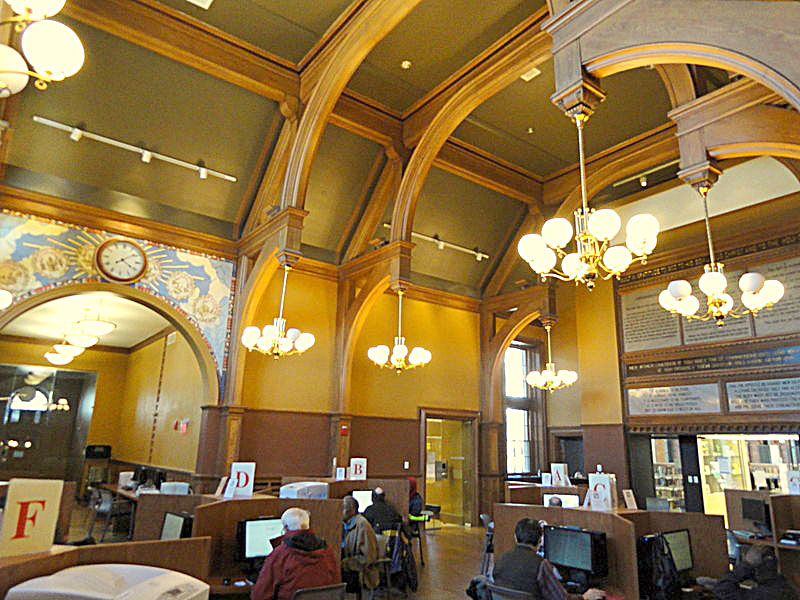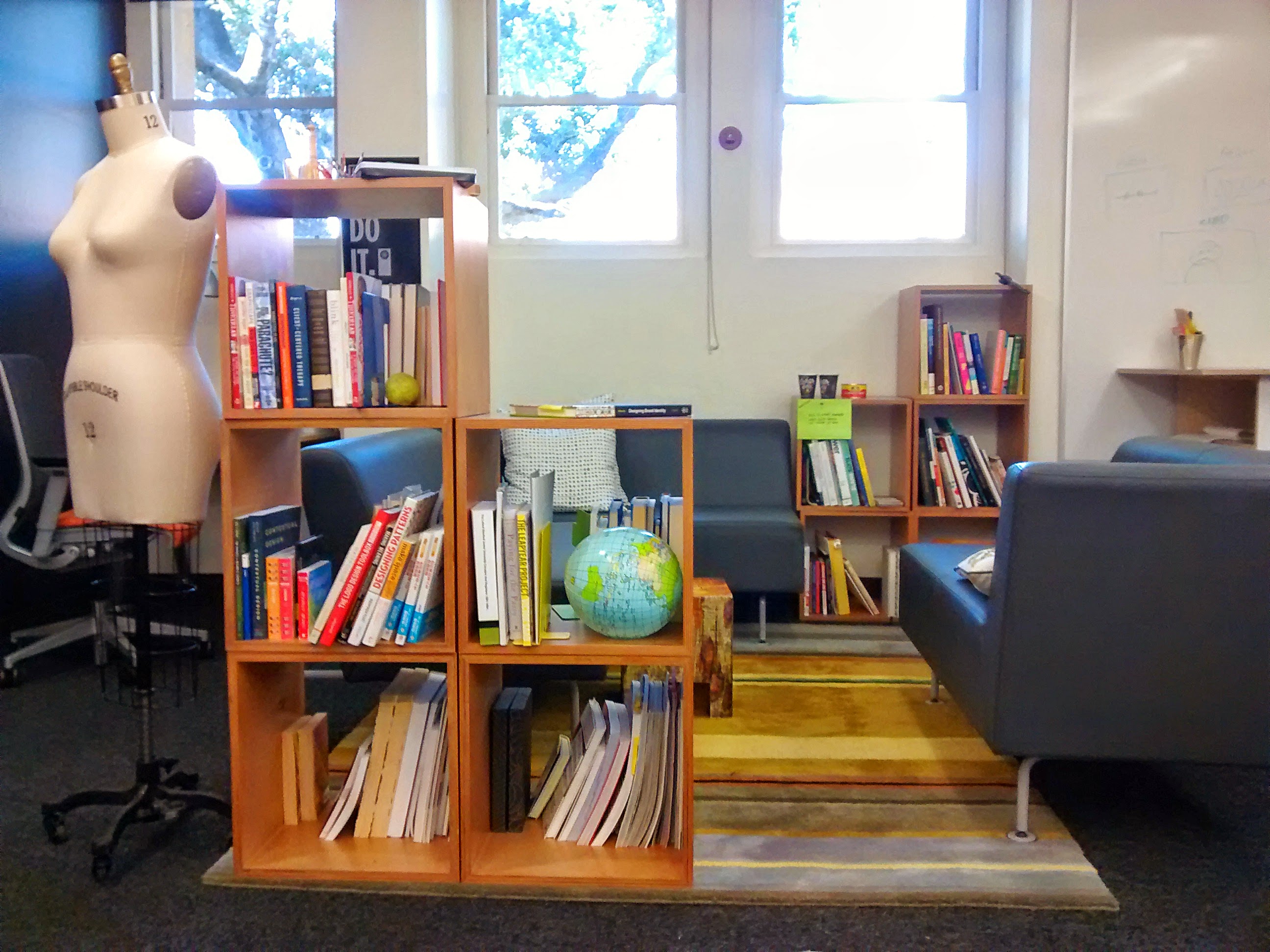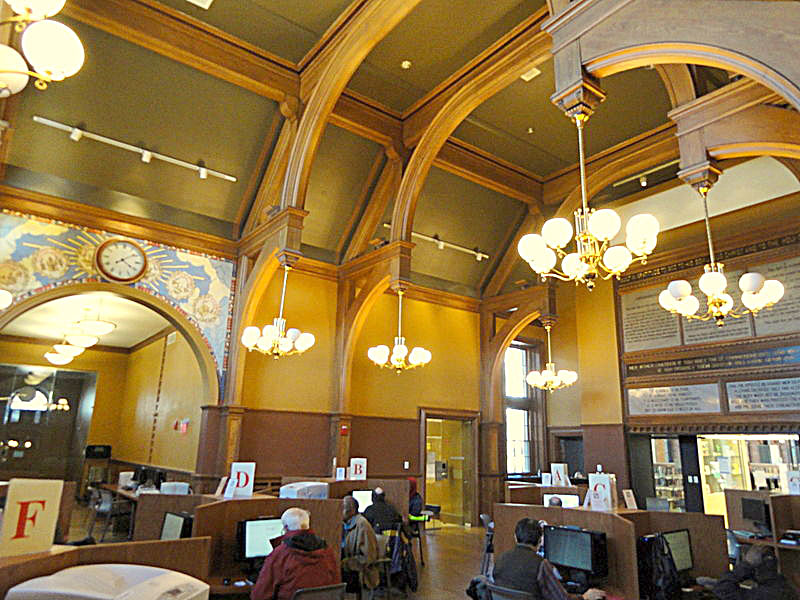
Libraries: The physical + digital = new space for learning
Knight News Challenge: Libraries offers applicants a chance to share in $2.5 million by focusing on the question “How might we leverage libraries as a platform to build more knowledgeable communities?” Below, MIT Media Lab Director’s Fellow Philipp Schmidt writes about the connection between physical library space and the virtual space of information and communication. Photo: The new Cambridge Public Library, by Eric Herot via Flickr.
Most evenings I ride my bike home from work past the public library here in Cambridge, Mass. Often I see parents with their children, enjoying themselves on the playground in front of the library. I also see people quietly reading inside the building, as the evening lights around them turn on.
RELATED LINKS
“To build better libraries, start with the needs of people” by Emi Kolawole on Knight Blog (09/25/14)
“Powerful ideas push the boundaries of what libraries can be” by Stephanie Pereira (09/24/14)
“Make the most of your submission for Knight News Challenge: Libraries” by Chris Barr and John Bracken (09/23/14)
“Lesa Mitchell, Network for Scale: A new opportunity for libraries” on Knight blog (9/19/14)
“Lessons in sharing, from the public library” by Nate Hill on Knight blog (9/18/14)
“Bianca St. Louis, CODE2040: ‘I envision libraries as a creative space and entrepreneurial hub’” on Knight blog (9/18/14)
“Why Libraries?” by Sheila Murphy on Knight blog (9/17/14)
“Libraries cultivate connections, community and more in the digital age” by Anthony Marx on Knight blog (9/15/14)
“Can research libraries adapt to live up to their potential?” by Bernard Reilly on Knight blog (9/12/14) “Finding the sweet spot for libraries in the digital age” by Jill Bourne on Knight Blog (9/11/14)
“Knight News Challenge: Libraries opens for entries” by John Bracken on Knight Blog (9/10/14)
“Why Libraries [Still] Matter” by Jonathan Zittrain on Medium (9/10/14)
“News Challenge to explore role of libraries in the digital age” by John Bracken on Knight Blog (8/25/14)
“Knight News Challenge on Libraries offers $2.5 million for innovative ideas ” – Press Release (8/10/14)
In the same way that playgrounds are public spaces for play, I think of libraries as public spaces for learning. I have been interested in another type of public space, the concept of a digital commons, for a long time. And today I am fascinated by the connection between these public spheres, between the physical space of the library, and the digital virtual space of information and communication. Leveraging their strengths, and tinkering with ways that they can complement each other, is one way to reimagine what the library of the future could look like.
In the past, when access to information and experts was scarce and books were unaffordable, libraries acted as archives of shared human knowledge. Today content knowledge is accessible easily via the Internet. But content knowledge is only a small part of learning. We learn best when we work on projects that ignite our passion, in collaboration with peers, and in a playful environment that encourages risk taking. At the Media Lab we call those the four Ps of Creative Learning and we apply them everyday.
Bringing together the things that are great about the Internet with the affordances of a physical venue that the library can offer, let’s imagine a few interesting scenarios.
The maker culture is a relatively recent phenomenon that has already managed to newly inspire people to think of themselves as creators rather than consumers. In the same way that books used to be scarce, many tools and machines, such as 3-D printers or laser cutters, are not affordable and could easily be shared between a number of users. Some libraries are already starting to host maker spaces and host communities of tinkerers and creators. But more could be done to network the libraries and connect their local communities.
A second area I find exciting is the connection between online and offline learning. We know that at top U.S. colleges, the ability to form or join study groups has a strong influence on student success. It is likely that the same is true for online learning. Meeting regularly with a local group of other learners could make it easier to persist through hard problems, and enhance the value I get from watching online lectures or working in front of the computer on my own. Libraries could be the meeting space where I find others to learn with, or teach.
I am very optimistic about the potential of technology to reimagine the library, but I am convinced that technology alone is not enough. I don’t believe in the Silicon Valley style of disruption that tries to solve problems around institutions. To ensure that the library can continue to play an important public service, and act as an anchor for local communities, political will—and money—will be necessary.
The winning projects of this News Challenge will find creative ways to imagine the future of the library. My hope is, that by doing so, they will also pave the way towards strong public and private philanthropic support for this important institution.
Above: Cambridge Public Library. Credit: Wikimedia Commons.
Opportunities to learn more about Knight News Challenge: Libraries
Amy Garmer, director of the Aspen Institute Dialogue on Public Libraries; Corinne Hill, director of the Chattanooga Public Library; Kenneth G. Furton, provost of Florida International University; and John Szabo, city librarian of the Los Angeles Public Library, will lead a Knight-sponsored discussion on the future of libraries on Monday, Sept. 29, from 12:15 p.m. to 2 p.m. at the InterContinental Miami. Watch the live stream at knightfoundation.org/live/.
You can join us for virtual office hours on Monday, Sept. 29, from 2:30 to 3:30 p.m. ET. Participants can access the meeting online (https://bluejeans.com/731675489/browser using ID 731675489), or participate via phone at 1-888-240-2560.
To submit an entry for the Knight News Challenge or provide feedback on other submissions, visit newschallenge.org. Knight News Challenge: Libraries closes on Sept. 30 at 5 p.m. ET. Winners will be announced in January.
Recent Content
-
Journalismarticle ·
-
Journalismarticle ·
-
Journalismarticle ·




